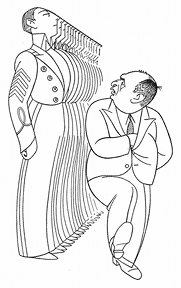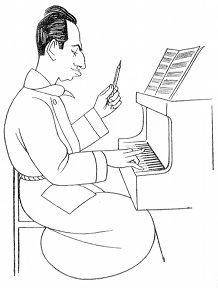“HELLO, EVERYBODY”
Year: 2011
Past paper: A Warner Baxter bonus
We’ve come across any number of theatre flyers over the years (including the drive-in flyers from the late 1950s featured in this post), but we’ve never encountered one quite like this one.
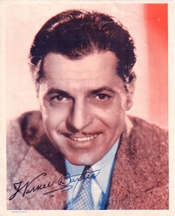 |
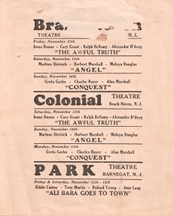 |
At first glance, it appears to be simply a promotional headshot of once-popular leading man Warner Baxter with a printed autograph (which is surprisingly convincing, by the way—we were briefly fooled into thinking we’d scored an genuine autographed photo of Baxter for a mere five smackers), but turn the photo over, and voila—it’s a programming schedule for three different New Jersey theatres. Part of the name is missing from the top theatre, but a little research has us convinced it was the Branchville Theater in Branchville, New Jersey. All we’ve been able to ascertain about the Branchville is that it was listed in the Film Daily Yearbook in 1944 and 1951, and on one weekend in 1937, they screened The Awful Truth, with Irene Dunne and Cary Grant, Angel with Marlene Dietrich, Herbert Marshall, and Melvyn Douglas, and Conquest, starring Greta Garbo and Charles Boyer.
How much earlier than that the theatre was in operation or when it closed, we can’t say. But we’d pay good money to see those three pictures at a small-town bijou like the Branchville, of that you can be sure.
Also featured on this promotional photo is the Colonial Theatre in Beach Haven, New Jersey. (Did you know that no fewer than ten Jersey towns had a theatre called the Colonial at one time or another? It’s true. And an eleventh burg, Hopewell, had a movie theatre called the Colonial Playhouse.)
This Colonial opened in 1922 as the New Colonial on the corner of Bay Avenue and Center Street, replacing an old wooden structure some blocks away. One source says the old Colonial was retained and used in the winter, when the crowds thinned out (Beach Haven, as you might have guessed, is on the Jersey shore, so the population no doubt used to drop precipitously each year at summer’s end. Probably still does.)
Here’s a pair of then-and-now photos of the Colonial. Word has it, it’s now a private residence and no longer the hardware store it was in 2007, but we have no proof of that.
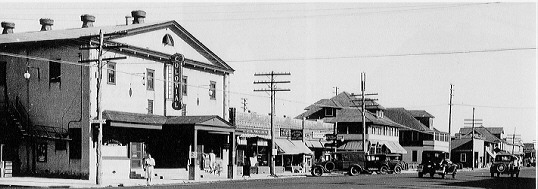
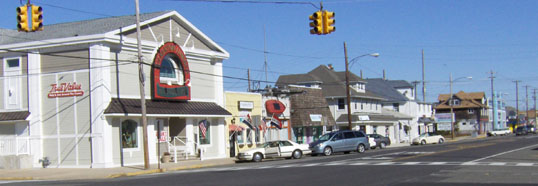
Interesting to note they were featuring the same three movies the Branchville was showing, but each played one day later at the Colonial. (We can’t help but wonder what the Colonial was showing on Friday, Nov. 12, 1937. The flyer doesn’t say.)
The last bijou on the flyer is the Park Theatre in Barnegat, New Jersey. Both the Barnegat and the Colonial (and, we’re guessing, the Branchville) were owned and operated by one Harry Colmer, who died in 1956. His family operated the theatres until 1964, when they sold them.
The Park, which opened in the early 1900s as the Barnegat Opera House, a venue for vaudeville and minstrel shows, began also showing movies between 1915 and 1920. It later became a full-time movie house under the new name. The Park Theatre, since demolished, was located on Shore Road in Barnegat, which is presently Route 9.
The weekend of Friday and Saturday, November 12th-13th, 1937, the Park was featuring Ali Baba Goes to Town, starring Eddie Cantor, Tony Martin, and Roland Young. That one we’d have to think twice about catching. We’d likely opt to drive the twenty miles over to Beach Haven to take in The Awful Truth or Angel at the Colonial (Branchville lies 142 miles away, a bit of a trek to catch a movie).
Times Square Tintypes: George Gershwin
“STRIKE UP THE BAND”
Let us show you the Wonder City
Do you have holiday travel plans that are bringing you to New York City? If so, this 1930s pamphlet from a bus tour company, which comes courtesy of our pal Tim, will have you smiling and sobbing simultaneously (smiling at the charms of a cool bit of ephemera like this; crying at the prices cited compared to what you’ll be paying when you arrive).
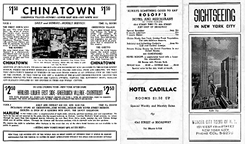 |
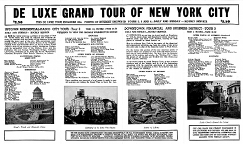 |
| Hi-res | Hi-res |
Speaking of traveling to NYC, we have an exciting new venture to share with you. As a duly licensed NYC tour guide, we’ve launched a walking tour operation called Avenues and Alleys. These privately booked tours are designed to broaden your horizons as a visitor to the Big Apples, showing you sites and sights you might not otherwise find on your own.

We’re especially excited about our Christmas Tour, which is now available for booking from Friday, Nov. 25 through Thursday, December 22. New York really is the Christmas Capitol of America (if not the world), and on this 90-minute stroll, we’ll show you the sights and share the stories that illustrate the major influence NYC has had on the way Christmas is celebrated here in the United States. You’ll see the classic NYC department stores where so many Christmas traditions were born (and whose windows continue to amaze and delight), including Macy’s, Lord & Taylor, and Saks Fifth Avenue; you’ll see Rockefeller Center with its iconic ice skating rink and breathtaking Christmas tree, not to mention Radio City Music Hall, home since 1933 to the Christmas Spectacular starring the Rockettes.
You’ll learn why it could be argued that ol’ Santa Claus was born in New York (and if not born, then raised to maturity), about the man who wrote A Visit from St. Nicholas (or did he?), and so much more. And along the way, you’ll enjoy the holiday atmosphere in the town that invented both hustle and bustle.
You can learn much more about us our website (which is also a NYC-centric blog), and we hope you’ll take a moment to “like” our page on Facebook and follow us on Twitter. And given that we can use all the help we can get in spreading the word about our fledgling operation, please mention us to any friends and family who are NYC-bound for the holidays and beyond.
We’d love the chance to show you—and them—the town!
Times Square Tintypes: David Belasco
“THE GREAT WIZARD OF 1888”
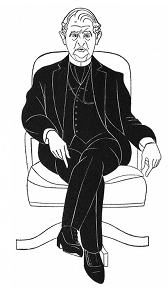 Claims he feels as spry today as he did at the age of twenty-one. If you doubt it, he’ll race up and down the corridor to prove it to you. His one great wish is to die in harness.
Claims he feels as spry today as he did at the age of twenty-one. If you doubt it, he’ll race up and down the corridor to prove it to you. His one great wish is to die in harness.
